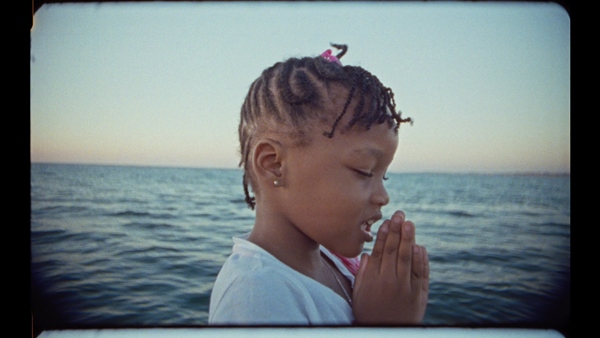This engaging documentary, which is all about Jamaica, starts off with black-and-white footage set to a folksy song about leaving the island behind. It has a nostalgic feel, although that very quickly fades away as the film shifts to a gritty corner of Kingston, which is full of prostitutes, drug addicts, and others living on society’s margins. This first section is largely unflinching, combining close-up profile shots and snippets of real conversations between the subjects and those who engage with them for a sense of intimacy that is at times unsettling.
From there, the film looks for the underlying causes of the island’s social ills, which, in turn, leads to an exploration of its at-times contradictory nature. On the one hand, it is a land of plenty, judging by the many fruits and vegetables grown there and their nutritional value, according to more than one rhapsodic interviewee. Another Jamaican soliloquizes on the many sources of water and the sheer abundance of it everywhere. The idea of plenty can also be seen in all the churches, as apparently the island has more of them per capita than anyplace else.
But on the other hand, director Khalik Allah, who still has roots in Jamaica on his mother’s side, cuts to footage of men with physical ailments, implying that for all the talk by certain Jamaicans about being among the healthiest beings, there are serious health problems. He also dives into the history of organized religion on the island, portraying Christianity as a tool for Europeans to keep docile both the indigenous peoples and the African slaves they brought to their colonies. Even Rastafarianism, a reaction to Christianity native to Jamaica, is shown as two-sided: one Rastafarian speaks high-mindedly on how marijuana elevates the consciousness, while another just sounds baked.
Black Mother has a very loose structure, with a recurring image of a pregnant woman, and the film is divided into three “trimesters.” Women are viewed as being among the island’s natural resources. Indeed, one of the very first shots is of a nude, damp, glistening female form. Both male and female voices praise the Jamaican woman for everything she offers, physically and emotionally, although the men’s commentary veers uncomfortably close to objectification.
Far more illuminating are the snippets of audio from actual women, some of whom bleach their skin because lighter tones are considered more beautiful, a cultural mindset left over from the days of colonization. Others are comfortable in their own skin and refuse to change it. As much as the film celebrates feminine beauty in its myriad forms, disquieting moments of reality sometimes flash through: the camera slowly pans away from a subject to reveal a burn mark on her forearm, which is never explained. Prostitutes, meanwhile, make clear just how dangerous their line of work is. One comments that “only God” protects them.
If the first trimester centers on the island’s history while the second focuses on self-identity, the third trimester is about the life-and-death cycle itself. A large section consists of a funeral for one of the director’s relatives, where it becomes clear that Allah’s feelings about religion, even Christianity, are more complex than they initially seemed, based on all of the ceremonial details he chooses to include. No matter the amount of criticism previously levied, the film ultimately acknowledges religion’s value in providing a sense of hope and community.
A photographer prior to taking up filmmaking, Allah includes more than a few glorious shots of Jamaica’s scenic wonders. He also has a unique aesthetic that frequently involves utilizing slow-motion or non-synched audio to create a sense of disconnect. The visuals are all the more arresting as a result. Yet this is a film that offers more than surface charms. It digs deeply into its setting and, in the process, yields a fascinating portrait.

















Leave A Comment